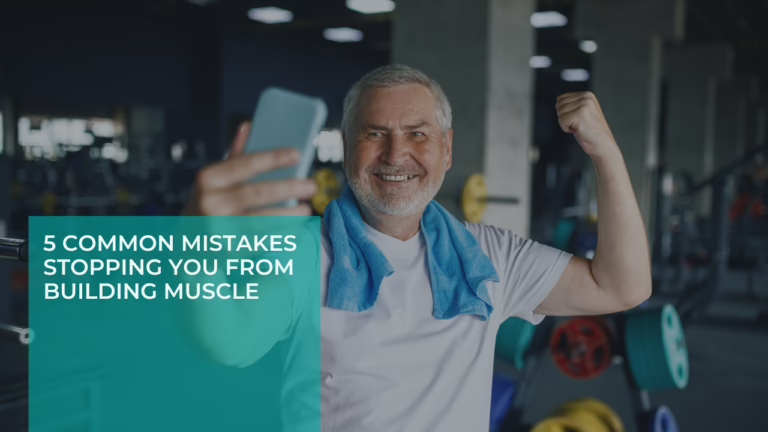The Ultimate Guide To Defeating Diabetes In No Time!
In the health and fitness world, type 2 diabetes has emerged as one of the most talked-about challenges. With millions grappling with this condition, the quest for practical solutions has never been more pressing.
But what if I told you there’s a glimmer of hope, a beacon of light, in this seemingly endless tunnel? As a personal trainer and nutritionist specialising in helping clients with type 2 diabetes, I’ve witnessed firsthand the transformative power of particular strategies. And today, I’m about to share a game-changer with you. Hold onto your hats because this “one simple trick” might be the key you’ve been searching for!
I remember a client, we’ll call her “Sarah”, who came to me disheartened and on the brink of giving up. She’d tried everything, from fad diets to expensive medications, but her blood sugar levels remained stubbornly high. “I’ve tried EVERYTHING!” she’d grumble. But little did she know her life would take a turn for the better.
The Struggle with Type 2 Diabetes
The journey with type 2 diabetes is often littered with hurdles, misconceptions, and moments of despair. I’ve seen it in the eyes of countless clients, each battling their unique challenges yet united by a common goal, to regain control of their health.
Take John, for instance. A man in his 50s, he walked into the gym with a palpable determination. But behind that determination was a history of sleepless nights, countless finger pricks, and the constant anxiety of fluctuating blood sugar levels. “Every meal feels like a gamble,” he confessed. “Will this send my sugar levels soaring? Or will it be just right?” It’s a feeling echoed by many who feel trapped in a never-ending cycle of uncertainty.
And then there’s the weight. The weight feels like an immovable object. John often said, “It’s not just the number on the scale. It’s the judgment, the unsolicited advice, and the feeling of being trapped in a body that doesn’t feel like mine.”
The link between obesity and diabetes is well-documented. Still, many don’t realise the emotional weight that accompanies the physical.
But here’s the silver lining, amongst these emotional struggles, there’s a reservoir of strength and resilience. I’ve witnessed it time and again. From Sarah’s unwavering commitment to John’s infectious enthusiasm, there’s an indomitable spirit that refuses to be defeated. And it’s this spirit that becomes the foundation for transformation.
The Science Behind the “Simple Trick”
Before we dive into the transformative trick, it’s essential to understand the science that underpins it. After all, knowledge is power, and being informed is half the battle when it comes to our health.
At the heart of type 2 diabetes lies a term you might have encountered: “Insulin Sensitivity.” In layman’s terms, it’s how effectively we respond to insulin, the hormone responsible for regulating blood sugar.
When our sensitivity is high, our body needs less insulin to do its job. Conversely, when it’s low, we find ourselves in the treacherous waters of type 2 diabetes.
Now, here’s where things get interesting. Both exercise and nutrition play pivotal roles in enhancing insulin sensitivity. But not all workouts are created equal. Some can supercharge our body’s response, turning it into a well-oiled machine.
I recall a session with Sarah a few weeks into our training. She came bounding up to me, eyes sparkling with excitement. “You won’t believe it,” she exclaimed, “My blood sugar levels have been more stable this week than they’ve been in years!” And she wasn’t the only one. Over the years, I’ve seen this pattern repeat with numerous clients, each experiencing the magic of this “simple trick.”
So, what game-changing approach has been turning the tide for so many?
The One Simple Trick: High-Intensity Interval Training (HIIT)
Drumroll, please! The transformative approach that has been revolutionising the lives of many of my client’s lives is High-Intensity Interval Training, popularly known as HIIT.
It’s not just another fitness buzzword; it’s a scientifically-backed method that’s been making waves in health and fitness.
So, what exactly is HIIT? It’s a series of short, intense bursts of exercise followed by brief rest periods. Think of it as sprinting for 30 seconds, walking for a minute, and repeating. This dynamic shift between high intensity and rest profoundly impacts our metabolism, burning fat and, most notably, for our discussion, enhancing insulin sensitivity.
I remember introducing John to HIIT. Initially sceptical, he joked, “So you’re telling me I get to rest more than I work out? Sign me up!” But a few sessions in, the results spoke for themselves. His energy levels skyrocketed, his blood sugar readings became more consistent, and the smile on his face? Well, that was the cherry on top.
But it’s not just about the exercise. It’s about the afterburn, the increased calorie expenditure even after the workout. Sarah commented after her first HIIT session, “I feel like I’m still burning up, hours after the workout!” And she was spot on. This phenomenon, known as the ‘afterburn effect’ or scientifically known as ‘Excess Post-exercise Oxygen Consumption’ (EPOC), means your body continues to burn calories at an elevated rate long after the workout is over.
Now, I know what you’re thinking. It sounds too good to be true. But the beauty of HIIT is its adaptability. Whether you’re a seasoned athlete or just starting your fitness journey, HIIT can be tailored to suit your needs, making it an accessible and effective tool in the fight against type 2 diabetes.
Nutrition: The Unsung Hero
While HIIT is undeniably a powerhouse in the battle against type 2 diabetes, it’s only one piece of the puzzle. To harness its benefits and kick diabetes to the kerb, we must also focus on the unsung hero of this journey, nutrition!
Food is more than just fuel; it’s information for our cells, a guide that directs our body’s responses. And when it comes to diabetes, proper nutrition can be a game-changer.
I often tell my clients about my grandmother, a vibrant woman who believed in the healing power of food. We’ve come a long way in understanding nutrition’s complexities, and her wisdom holds true.
Certain foods can boost insulin sensitivity, acting as allies in our quest for better health.
So, what are these magical foods? Think leafy greens, fatty fish rich in omega-3s, whole grains (low-GI carbs), and nuts. But it’s not just about what you add; it’s also about what you reduce.
Limiting processed foods, sugars, and unhealthy fats can make a world of difference. Sarah’s transformation was a testament to this. Alongside our HIIT sessions, we revamped her diet. The sugary cereals and fizzy drinks were replaced by oats, fresh berries, and plenty of water. Within weeks, she felt lighter, not just in weight but in spirit. “It’s like my body is thanking me,” she’d often muse.
But here’s the key, it’s not about deprivation but balance. I’ve always advocated for sustainable changes over drastic diets as a nutritionist. It’s about making choices that nourish the body, creating an enjoyable and health-promoting lifestyle.
Safety First: Precautions and Considerations
Setting out on a journey towards better health is commendable, but it’s essential to tread with caution. As with any significant lifestyle change, there are precautions to consider, especially when dealing with a condition as intricate as type 2 diabetes.
Consultation is Key: Before diving headfirst into HIIT or making drastic dietary changes, always consult your GP or diabetic nurse. They can provide guidance specific to your specific needs and condition. I remember a client, Rodger, who was eager to start but had a history of heart issues. With his doctor’s advice, we crafted a safe and effective plan for him.
Listen to Your Body: While HIIT is adaptable, it’s crucial to recognise your limits. It’s a sign to slow down or modify if something feels off or painful. Sarah, during one of our sessions, felt a bit dizzy. We immediately shifted to a lower-intensity workout, ensuring her safety. You don’t need to go so hard as to become hypoglycaemic. That isn’t good, either.
Monitor Blood Sugar Levels: Engaging in intense workouts can sometimes lead to fluctuations in blood sugar levels. Always watch them closely, especially when starting a new routine. John, ever the meticulous one, kept a workout diary, noting his sugar levels before and after each session. It helped him stay on track and gave him a sense of accomplishment seeing the improvements over time.
Stay Hydrated and Well-Fueled: Ensure you’re well-hydrated before, during, and after workouts. Also, have a small meal or snack a couple of hours before exercising to ensure you have the energy to power through. With her newfound love for nutrition, Sarah started carrying a bottle of electrolyte water and a small bag of cashews to munch on post-workout.
Educate Yourself: Knowledge truly is power. The more you understand about your body, diabetes, and the effects of exercise and nutrition, the better equipped you’ll be to make informed decisions. I encourage my clients to attend workshops, read books, or join my support groups to continually learn and grow.
Ultimately, reversing type 2 diabetes is a marathon, not a sprint. It’s about consistent efforts, understanding, and, most importantly, self-care. Remember, you’re not in this alone. With the proper guidance, support, and knowledge, the road to better health is well within reach.
References
Little, J. P., Gillen, J. B., Percival, M. E., Safdar, A., Tarnopolsky, M. A., Punthakee, Z., … & Gibala, M. J. (2011). Low-volume high-intensity interval training reduces hyperglycemia and increases muscle mitochondrial capacity in patients with type 2 diabetes. Journal of Applied Physiology, 111(6), 1554-1560. https://journals.physiology.org/doi/full/10.1152/japplphysiol.00921.2011
Bird, S. R., & Hawley, J. A. (2012). Update on the effects of physical activity on insulin sensitivity in humans. BMJ Open Sport & Exercise Medicine, 46(3), 33-39. https://bjsm.bmj.com/content/46/3/33
Evert, A. B., Dennison, M., Gardner, C. D., Garvey, W. T., Lau, K. H. K., MacLeod, J., … & Rodriguez, T. (2019). Nutrition therapy for adults with diabetes or prediabetes: A consensus report. Diabetes Care, 42(5), 731-754. https://care.diabetesjournals.org/content/42/5/731
Wing, R. R., Lang, W., Wadden, T. A., Safford, M., Knowler, W. C., Bertoni, A. G., … & Clark, J. M. (2011). Benefits of modest weight loss in improving cardiovascular risk factors in overweight and obese individuals with type 2 diabetes. Diabetes Care, 34(7), 1481-1486. https://care.diabetesjournals.org/content/34/7/1481
LaForgia, J., Withers, R. T., & Gore, C. J. (2006). Effects of exercise intensity and duration on the excess post-exercise oxygen consumption. Journal of Sports Sciences, 24(12), 1247-1264. https://www.tandfonline.com/doi/abs/10.1080/02640410600552064
Disclaimer: This blog post is intended for informational purposes only and does not constitute medical advice. While I am a certified Nutritionist, and Personal Trainer, I am not a healthcare professional. The information provided in this post is based on my personal experiences, professional expertise, and available research. It should not be used as a substitute for professional medical advice, diagnosis, or treatment. Always seek the advice of your healthcare provider with any questions you may have regarding a medical condition or treatment and before undertaking a new health care regimen. Never disregard professional medical advice or delay in seeking it because of something you have read on this blog.


